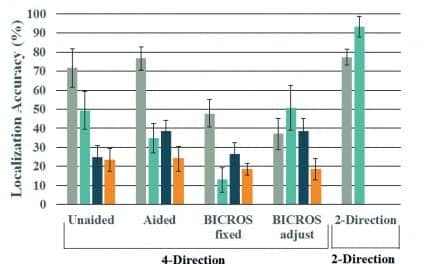Efforts to reach out to patients who have received hearing aids from you in the past in a way that balances education with a call to action is at the heart of relationship marketing—and the building of a large and loyal client base.

|
is a former editor of an audiology magazine and currently works as a freelance writer for CareCredit, as well as for other hearing healthcare companies. |
Ask any marketing guru about the best way to get customers to come back to a business and he/she will tout the benefits of relationship marketing—building solid relationships with everyone who purchases a product or service (as well as those who do not) through many means of communication. The challenge to relationship marketing for hearing care professionals, however, is that once patients are fit with hearing aids and are satisfied with the performance of the device, there are few reasons to visit as regularly as they did during the fitting and verification period.
While some dispensing professionals welcome this arrangement, most would agree that becoming too distant from one’s patient base is problematic. Without some sort of contact, a patient may abandon you when they need a new hearing aid.
Upgrading Technology Through Upgraded Communications
One way to ensure loyalty and communicate more frequently with patients who have not been seen recently is to inform them of new technologies that have come out since they last visited you. Sharing this information through a letter, postcard, newsletter, or open house; informing patients about payment options; and then encouraging them to visit your office gives patients more food for thought about hearing health, and may encourage them to upgrade their amplification. But whether they return or not—and whether or not they purchase new amplification if they do return—they will clearly understand that you are thinking of them. This is relationship marketing at its finest.
Jeff Orcutt, AuD, an audiologist at Hearing Center Inc, Indianapolis, believes it is beneficial to reach out to patients who have not returned for several years and “still have your name out and let them know you’re still around and you care.” His practice compiles a database of information on patients when they purchase hearing aids, including the dates they visited, and sends correspondence about every 6 months.
Every 3 to 5 years, his practice also sends postcards to patients who have not been seen recently to let them know that new technology is available. These patients are encouraged to come in for a hearing test and a demonstration of the new technology. Patients who have not been in for 3 to 5 years also may receive an incentive to return, such as free batteries for 3 years.
Targeting Patients
Jack Adams, MS, owner of Audiology Consultants of Southwest Florida, with offices in Cape Coral and Fort Myers, also keeps a database of patient information that enables him to “query just about anything we want to identify a particular patient.” At the end of the year, he sends general correspondence to all patients who have been fit with hearing aids in his office but haven’t been in during the year. When discussing new technology, he targets specific patient segments so he is reaching the people who could benefit most from a particular technology.
The patient group receiving targeted correspondence “depends on the hearing aid,” Adams says. “When open fit came out, we picked everybody with high-frequency hearing loss. With power aids, everybody with severe hearing loss.” If a new type of hearing aid comes out that will work for patients with several types of hearing loss, he will promote the information in the customizable section of the Hearing HealthCare News® newsletter he sends out quarterly.
Linda Van Dyke, MA, MBA, owner of Arapahoe Hearing Associates Inc, Centennial, Colo, relies on her patient newsletter and word of mouth to inform patients about new technology. Van Dyke has a loyal following for her newsletter and says the readers expect to receive information about new technology in the context of her newsletter. She says she likes this method of announcing new technology because it is a relatively inexpensive way to reach large numbers of patients compared to television or newspaper advertising.
She also finds that patients fit with new hearing aids tell others. Another way word-of-mouth advertising is generated is by simply calling trend-setting, “early adopter” patients to inform them of new technology. “We have a handful of patients that always want the latest and greatest,” she says.
Van Dyke acknowledges that consumer seminars can be helpful to business, but she only conducts them when major improvements in new technology have been made. Good examples from the past have been when digital hearing aids first came out or, more recently, when open-fit hearing aids were introduced, she says.
Tested, Not Sold
Another patient group to target with correspondence is those who visited the practice several years earlier but left without purchasing amplification. It is wise to not ignore the “tested but not sold” crowd because they may still be considering a purchase.
Adams’ practice has found success with getting patients to come back in after leaving his office at least 3 years ago without a purchase. “They may not have been willing or wanting to make the commitment initially, but 3 years down the road, some decide to come back in,” he says. To educate these patients, he has a series of 12 different letters on informative topics, including communication strategies for people with hearing loss, the benefits of amplification, and the difference between analog and digital hearing aids. The correspondence is “themed toward basic education with some encouragement of our willingness to discuss the hearing test or retest,” he says. These patients receive a letter every 4 months and are added to the mailing list for his newsletter.
Some Caveats
Adams had two caveats about promoting new technology to individuals: First, the marketing should be limited to people who have been away from the practice for a few years, and second, the messages in the correspondence should educate patients.
“We never [send that type of correspondence] unless the patient’s hearing aid is at least 3 years old,” he says. “We don’t want to come across as always wanting to sell patients something new or different.” He encourages practitioners to use a 3-year rule so the correspondence doesn’t seem like a solicitation, and also so patients don’t get the impression that the hearing aids they’ve been fit with aren’t as great as they thought they were. Sending new product notices sooner could “create disappointment on the part of the patient,” Adams says.
Although correspondence should educate consumers about new kinds of hearing aids, it should not be without some type of call to action, such as a test drive of the new technology or a hearing evaluation.
A Balanced Message
Creating correspondence that gets patients thinking and acting but does not seem like a blatant sales ploy is the challenge, Orcutt says. “If I get a patient in [following correspondence about new technology] and their hearing aid is doing well, I won’t mention too much about the new technology unless they inquire about it,” he says. “If I feel that it’s time for a change, I mention [the new product] a little more, but still give them the choice. It’s very important…to let them know that we’re [suggesting] it for their well-being.”
When Van Dyke talks in-depth about new hearing aids, she explains to her patients what features have been improved in the new technology and, more specifically, what features might be relevant to each individual patient’s needs. She asks what their specific hearing problems are and if their old hearing aids have still been helping. If not, she segues into more discussion on the new hearing aid. Van Dyke also believes in using demonstrations with patients, and says that test-driving hearing aids helps patients rationalize the value of amplification based on how it improves hearing. “The more they can see upfront, the happier they’ll be at spending money,” she says. “If improvements are significant [between the old and new hearing aid], the money becomes secondary.”
Financing and Trial Periods
Orcutt’s practice uses third-party financing and trial periods to make it easier for patients to accept upgraded hearing aids. Because most insurance companies don’t cover hearing aids, he tells patients about other options, like CareCredit, if patients are concerned about being able to afford new hearing aids. “CareCredit allows them to pay off the hearing aid in one year without any penalties,” Orcutt says. “It has worked out for us really well for the people who thought a payment plan would be a better option.”
Practices that accept financing should inform patients of the availability of the plans in every correspondence, with special attention to this new addition when it is initially offered. Letters indicating the availability of financing options result in more people responding to direct mail campaigns.
For the trial period, Orcutt demonstrates the new hearing aid to give them a feel for what the hearing aid will do. Since the office environment differs from real-life, he encourages patients to purchase the hearing aid and informs them that, if the experience is not satisfactory, it can be returned in 30 to 45 days for a refund (minus the cost of the fitting fee). Financing options are helpful in situations like this because companies like CareCredit will reverse the transaction for the practice and the patient if hearing aids are returned. According to CareCredit statistics, however, dispensing professionals who offer the company’s financing plans have a return rate that is 75% lower than the industry average.
If you make the effort to continually reach out to patients who have received hearing aids from your practice in the past (or those who left without purchasing) in a way that balances education with a call to action, and use this same strategy during face-to-face meetings when they return, they will be more likely to purchase their next hearing aids from you. w
Correspondence to HR or Danielle Campbell-Angah at [email protected].





